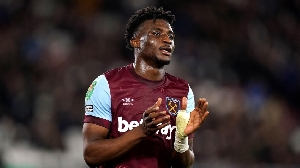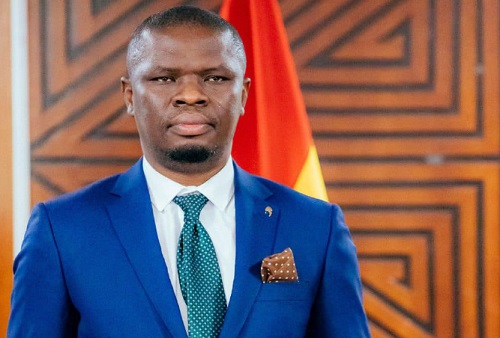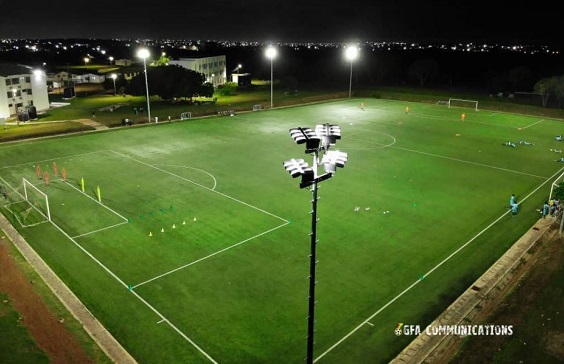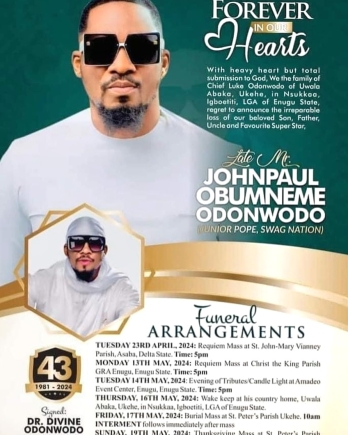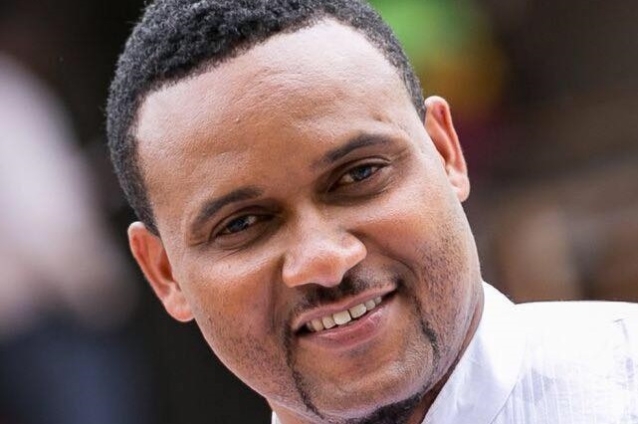Many in the audience thought they knew the man quite well because his name corresponded with cinema in Ghana but realised, after encountering other aspects of his wide-ranging creative abilities, that Kwaw Ansah was not simply the man who called the shots on a film set.
In the Exhibition Hall of the National Theatre on November 4, Kwaw Ansah the music composer, textile designer, painter, poet and artifacts designer was made known to the delight of the guests, most of whom had primarily come to see four of his documentary films at the invitation of the Bisa Aberwa Museum.
What eventually surfaced by the end of the two-hour programme was that Kwaw Ansah’s general artistic development over the years, his use of the mass medium of film and the establishment of the Bisa Aberwa Museum had all been guided by the desire to tell positive stories about Africa and black people.
“All we are trying to do is to bring about African glory; to tell Africans to be themselves and rise to tell their own stories,” says Kwaw Ansah. “At Bisa Aberwa, we have a mission to show and explain our wonderful contributions to world civilisation.”
The Bisa Aberwa Museum is located at Nkotum Mpo, Sekondi in the Western Region. It was officially inaugurated on July 28, 2019. It prides itself on being a place that celebrates the achievements of black people in areas such as visual arts, crafts, literature, performance arts, film, music, sports, medicine, science and more.
The four documentaries shown at the National Theatre event were ‘Crossroads of People, Crossroads of Trade’ (40 minutes); ‘Ebibirmba Aman Gyenabew: State of Our Continent’ (22 minutes); ‘Why I Do What I Do’ (Eight minutes) and ‘Clarion Call of Mama’ (12 minutes).
Before eye balls got fixed on the screen to watch them, guests had the opportunity to see 12 recent artifacts designed and directed by Kwaw Ansah and a painting of his ink inspired by a poem he wrote and performed at the Accra Arts Centre in 1968. The whole poem was: ‘KOKROKOOO, HOW LOUD NEED I CROW AFRICA, HOW LOUD?’
Works in the collection such as ‘Sankofa, Return To Your Values, Afrika’; ‘Nefertiti Ghana’; ‘Benin Royalty’ and ‘Divided We Fall’ all depict the beauty, grace and wisdom inherent in African values.
Kwaw Ansah (left) and Alimatu-Sadia Yussif of CEGASI
For those who did not know Kwaw Ansah as a music man, they were tickled to hear a playback of ‘Maabo Loss’, a 1959 composition by him for the then Kumasi-based Comets Band led by saxophonist Teddy Osei, later of Osibisa fame.
Many may be aware of the wax cloth design called ‘Aban Kaba’ but not whose creative output it is. Kwaw Ansah designed it for the United Africa Company (UAC), now Unilever, in 1958.
In those days, the wax cloth sellers at Makola were influential in deciding what the cloths were called. When they saw the design of interlocking rings, they immediately called it ‘Aban Kaba’ after Bob Cole’s song which was trending then.
The documentary films touched on a wide range of pertinent Africa-related issues such as disunity, naïve acceptance of everything foreign, raising children to appreciate their roots and the need for the continent to develop a common language for her people.
Kwaw Ansah’s films always draw on local culture and experience, sometimes sprinkled with a bit of humour, to indicate his stance on issues. That approach was evident in the works shown.

Though ‘Clarion Call of Mama’ was inspired by the murder of George Floyd in the United States, it was still clothed in elements of Ghanaian culture which illustrated how the filmmaker entwines the destinies of black people everywhere.
Expectedly, the films elicited several insightful comments from the guests. They generally pointed in the direction that Africa had regretfully let go of many useful indigenous technologies and also that the films should be available to young people to help them ‘clear the oppressors’ smoke from their eyes to enable them to see their way home’.
“Europeans laugh at us because we boast about our ability to speak good English, good French, good German, good Spanish and other European dialects. That won’t take us anywhere. Our children do not appreciate our own values. Can we honestly say we have a future if such a trend continues?” Kwaw Ansah asked as he interacted with some of the guests.
A Cape Coast-based NGO, Centre for Gender and Social Inclusion (CEGASI) has recognised the Bisa Aberwa Museum as an outfit of enlightenment to help black people question, challenge and overthrow some of the mistaken notions that have existed about them for a long time.
It has, therefore, joined hands with the museum on a project called ‘Rediscover Africa: Celebrating Heritage Through the Bisa Aberwa Museum Experience.’ The project’s targets include promoting cultural pride among young people since understanding where they come from enhances their self-worth.
CEGASI’s Executive Director, Alimatu-Sadia Yussif, explained to guests at the National Theatre that the project was a journey of cultural reconnection, education and appreciation. She added that it was a commitment to celebrate the diverse, vibrant and rich heritage of Africa.
So the National Theatre event was a discerning session on the ‘different faces’ of Kwaw Ansah and how they complemented his thirst to see people of African descent everywhere stand up and say it loud that they were black and proud.
Source: GraphicOnline




